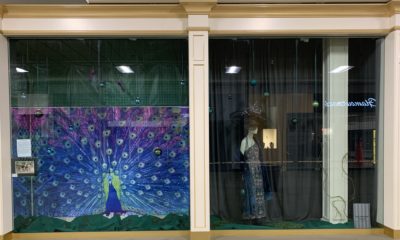THE PAST COUPLE of months in India, people have begun venturing out of their homes, beyond just stocking up essentials to making trips for eating out, shopping and cautious socializing. Shopping destinations, still considered unsafe by the majority of consumers, are seriously suffering for footfalls and sales. A survey done by Retailers Association of India (RAI) indicates an overall retail revenue drop of 59 percent, high streets by 61 percent and malls by 75 percent. Reluctant footfalls, fear of infection and a reduction in consumption owing to economic slowdown have contributed to this dismal show across most stores in the lifestyle category.
Meanwhile, e-commerce companies have thrived as more people have shifted to online shopping to avoid physical trips to the store. Leading e-commerce marketplaces like Amazon and Flipkart have seen more than 44 percent growth over the past year and represent more than 20 percent of all retail sales, according to data from the department of commerce. However, industry experts predict this accelerated adoption of e-commerce will slow down in the coming year as the world gets back to normal with the vaccine made widely available. In the meantime, resilient physical retailers in India are changing the rules of the game to do everything they can to stay in touch with their target consumers and get them to buy their products. (If customers did not come to the store, the store had to go to the customer!)
Using their less-utilized operational resources from physical stores located in malls and high streets, retailer are hyper-locating pop-ups in areas where their target consumers live – large residential areas and apartment complexes. Spaces are rented in permitted zones for a limited time with implemented safety protocols. Interestingly, mobile stores have become popular with retailers owing to the convenience of relocating and setting up time. Here are a few examples of brands that have taken the lead to bring their offering from stores to their customers’ homes.
Lifestyle on the Roll
Lifestyle, the leading department store chain in India, has 82 stores with an average size of 60,000 square feet located in 42 metros, tier two and tier three cities, serving thousands of neighborhoods across the country. The brand has started the initiative “Fashion On Wheels” with apparel in the top five cities in India. Mobile stores in the form of vans, with interiors conceptualized by the VM team to deliver the ambience and service sought by this segment, have seen success at every stop they make. The merchandise in the limited space was curated based on regional needs, like holiday merchandise during festive periods. Strong response from shoppers helped deliver three times the productivity per square foot in these pop-ups compared to physical stores. Responding to customer requests to bring in makeovers, the brand introduced Beauty Express in collaboration with leading makeup brands like Lakme, Faces and Innisfree.

Fast Fashion
Pepe Jeans, a leading denim and casual wear brand, operates roughly 193 stores across 122 Indian cites and is present in most leading multi-branded stores in the country. To stay on customers’ minds during the pandemic, the brand rolled out the #PepeMeUp Fashion Truck concept, which endeavors to offer an authentic in-store shopping experience in a safe, sanitized shopping environment in the comfort of the customer’s neighborhood. The store offers more than 250 fashion options, including face masks. To add to the experience, a DJ plays music every evening between 6:30 and 9:30 p.m. Interestingly, the trucks are designed to have the same look and feel of a Pepe store in terms of presentation and the musical experience.
Advertisement

Feet on the Street
Skechers, the leading footwear brand in India, retails from 284 exclusive outlets and from almost every leading fashion store chain across India. Recently the retailer launched a program to reach out to customers across the neighborhoods around their stores in major metros of India. The brand hyper-locates pop-up stores in apartment complexes of 500 to 800 units with at least 80 percent occupancy in about 10 locations per city at a time. The pop-up, which occupies just 100 square feet, features a selective assortment of walking shoes as well as slippers with a special focus on kids and senior citizens, for two to seven days per location. The brand has seen a trend of serving existing and new customers who get to try, pay through contactless methods and get their receipt online.

The Road Ahead
Though many are optimistic about returning to a state of normalcy, it is evident that consumer expectations have changed permanently with the availability of new shopping channels. Industry experts predict that, though post-pandemic days will see a surge in customers visiting physical stores, the shopping channels that grew during the lockdown period will continue to thrive. Hopefully, retailers taking their “stores to homes” today successfully will be encouraged to continue doing so even after the pandemic, continuing to offer Indian consumers the same convenience they are enjoying today.

 Photo Gallery1 week ago
Photo Gallery1 week ago
 Headlines3 days ago
Headlines3 days ago
 Headlines1 week ago
Headlines1 week ago
 Headlines1 week ago
Headlines1 week ago
 Designer Dozen2 weeks ago
Designer Dozen2 weeks ago
 Headlines1 week ago
Headlines1 week ago
 Designer Dozen6 days ago
Designer Dozen6 days ago
 Headlines1 week ago
Headlines1 week ago
























